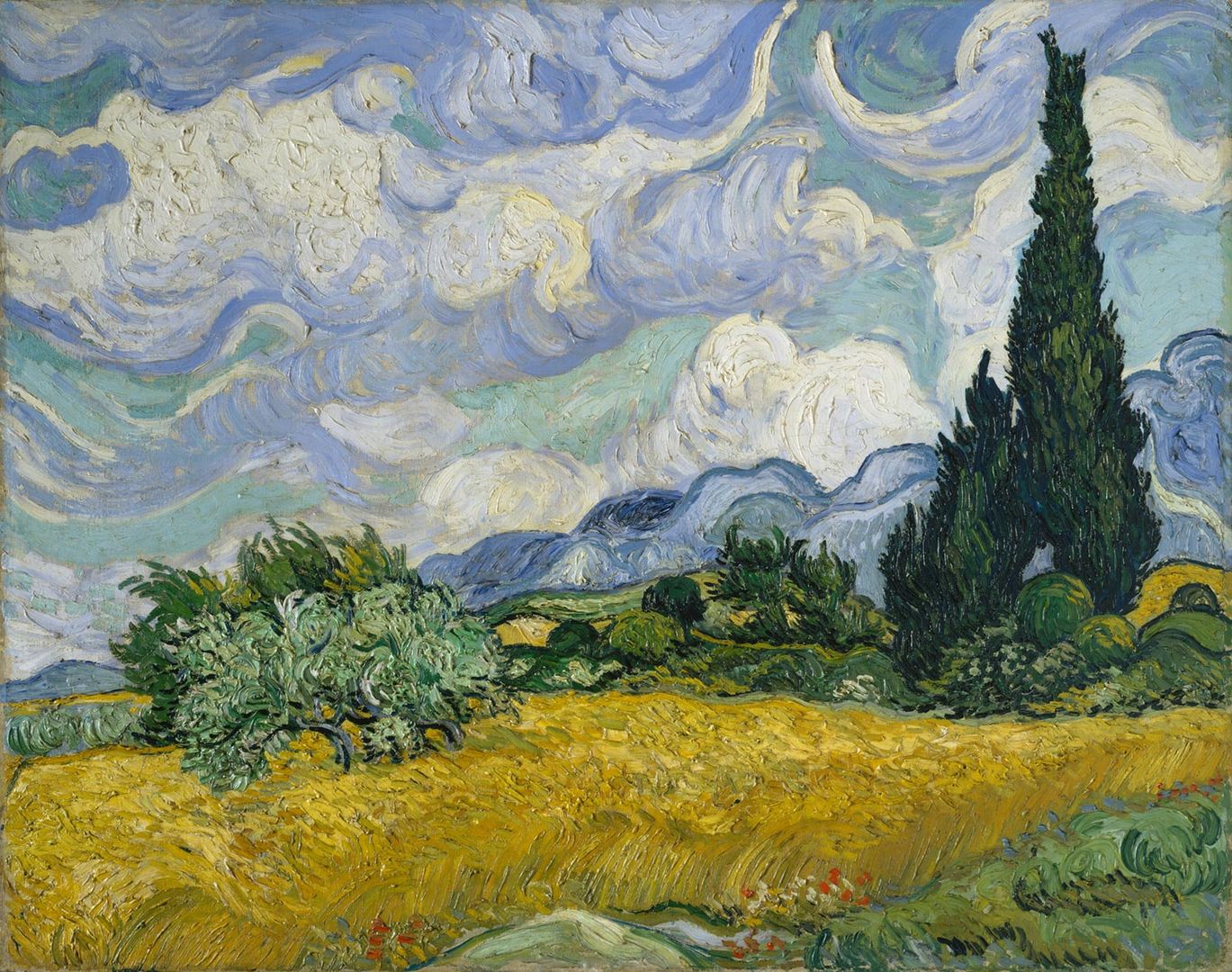
Interview with Philippe de Montebello on the Issue of Nazi-Confiscated Art
On July 14, 1998, the National Press Club invited Philippe de Montebello, then Director of The Metropolitan Museum of Art, to discuss the issue of works of art confiscated by the Nazis during World War II. Mr. de Montebello was the chair of a task force formed in 1998 by the Association of Art Museum Directors to establish principles and guidelines to deal with the identification and reinstatement of this stolen art.
Watch the interview on C-SPAN:
Read a complete transcript (PDF).
In the interview, Mr. de Montebello mentions two artworks at The Metropolitan Museum of Art. Here are his remarks:
Van Gogh, Wheat Field with Cypresses
Vincent van Gogh (Dutch, 1853–1890). Wheat Field with Cypresses, 1889. Oil on canvas, 28 7/8 x 36 3/4 in. (73.2 x 93.4 cm). The Metropolitan Museum of Art, New York, Purchase, The Annenberg Foundation Gift, 1993 (1993.132)
Philippe de Montebello:
However foul and vividly recalled World War II-era thefts may have been, the trail of works of arts since their illegal seizures or false sales can be very murky and vexingly difficult to sort out.
I offer as a case in point The Met's great Van Gogh (French pronunciation) or Van Gogh (American pronunciation), if you prefer, Wheat Field with Cypresses, which we acquired in 1993. We were very much satisfied at the time of its purchase that its provenance—it had come from the Mendelssohn family—was impeccable. But earlier this year the New York Times challenged us to prove the case. The story had a happy ending for the Museum going public. The Times reporter found a Mendelssohn descendant who recalled that the family left the picture behind with a farmer when they fled Germany; they returned after the war, miraculously found the paintings in the farmhouse, reclaimed them, and this particular painting was sold by the Mendelssohn family after the war. . . .
We had always known that it belonged to the Mendelssohn family. Our curators had assured themselves, before the purchase in 1993 (I don't remember when it was exactly now), that indeed, through the regular sources we consult, from various archives to the dealers who were involved all the way back to 1952—Nathan in Zurich, for example—that the picture was legitimately sold and taken out after the war. We didn't have the kind of proof that holds up in court, but we have the kind of proof that has traditionally held up in academic circles. What the New York Times did—and we're very grateful to Judy Dobrzynski for that kind of legwork—is to give us, in addition, proof that would hold up in a court of law. So, now we can put a little checkmark next to that picture. And we would encourage anybody who wishes to do due diligence on any other work of art in The Met— since we're interested in knowledge and the truth—to by all means call heirs and call people. That's that fewer number of phone calls I'll have to make.
To see the provenance, click on the painting to view the full object page for the artwork. Then scroll down and expand the "Provenance" panel.
Chardin, Soap Bubbles
Jean Siméon Chardin (French, 1699–1779). Soap Bubbles, ca. 1733–34. Oil on canvas, 24 x 24 7/8 in. (61 x 63.2 cm). The Metropolitan Museum of Art, New York, Wentworth Fund, 1949 (49.24)
Philippe de Montebello:
Museums should recognize and acknowledge, through their labeling systems and their catalogues, that a work of art has been looted from a Jewish family. And in fact a painting by Chardin, Boy Blowing Bubbles, was acquired in the 1960s by The Met and had been taken from a Jewish family in Europe. And the day in the '60s when it was put on the walls of The Metropolitan, it indicated on the label that such was the case, just as it did in the Museum Bulletin [April 1950, p. 227] published and written by Ted Rousseau about the painting.
To see the provenance, click on the painting to view the full object page for the artwork. Then scroll down and expand the "Provenance" panel.


